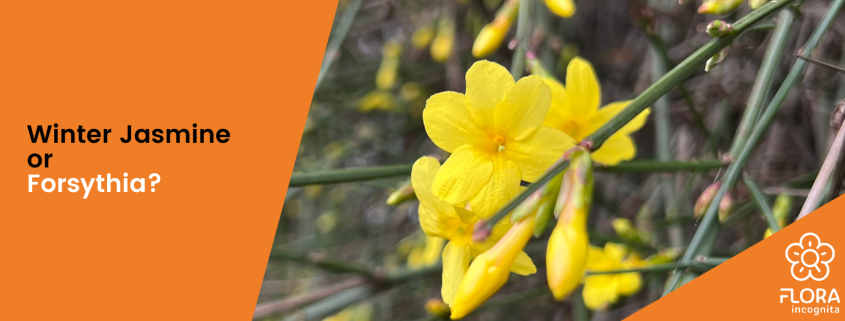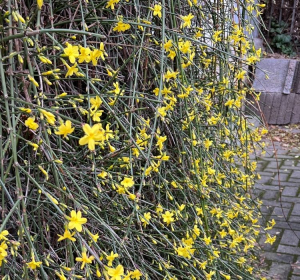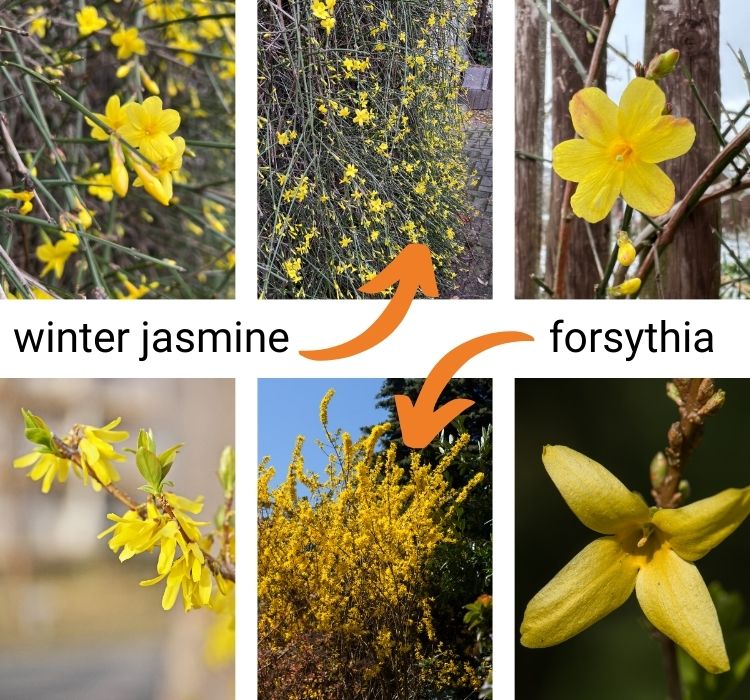Winter jasmine or forsythia?
“So early this year!”
Every year from Christmas onwards, we receive messages that the “forsythia is blooming particularly early this year”. No wonder, as its yellow flowers shine particularly beautifully in the gray dreariness (of our towns and villages) – but beware! The shrubs often catching the eye in December and January are (usually) not Forsythia (Forsythia × intermedia). They are often winter jasmine (Jasminum nudiflorum). Let’s take a closer look at the differences:
Winter jasmine
It originates from China and was brought to Europe as an ornamental plant. In France, it is already considered to be permanently wild. If its drooping branches touch the ground, they take root – which leads to the shrub growing tangled and dense.
Winter jasmine blooms from the end of December, and frosty days don’t bother the plant much – it constantly produces new flowers on its light green, bare shoots. Hence, the species name: nudiflorum means “naked-flowered”. A closer look at the flower shows that five to six yellow petals have grown together to form a corolla. Unlike many other jasmines, its flowers are not fragrant.
Forsythia
Forsythia hybrids are popular and rich in flowers (but still bare in January, as can be seen in the picture above). They form upright shrubs of up to 3 m in height. In the 1950s, forsythias were starting to flower in April, but due to climate change, the onset of flowering is shifting further and further into March, occasionally as early as February. Their flowers grow tube-shaped, with four zip-shaped, short, fused petals on bare, brown shoots. In addition to the highly cultivated ornamental plants (hybrids) from China, Korea, and Japan, there are several natural species, including one that is native to the Balkan Peninsula in Europe. It flowers in April and is rarely cultivated as an ornamental plant outside botanical collections.
Summary
Winter jasmine flowers from Christmas until around March, when forsythia also begins to flower. Winter jasmine forms tangled, drooping shrubs, while forsythia grows upright. The shoots of winter jasmine are green, and forsythia shoots are brown. The 5-6 petals of winter jasmine are roundish and fused together to a corolla, while forsythia has 4 petals fused together in a tube shape.
This article was featured as a story in the Flora-Incognita app in winter 2023/24. In this plant identification app, you can find exciting information about plants, ecology, and species knowledge, as well as tips and tricks for plant identification. Check it out!




